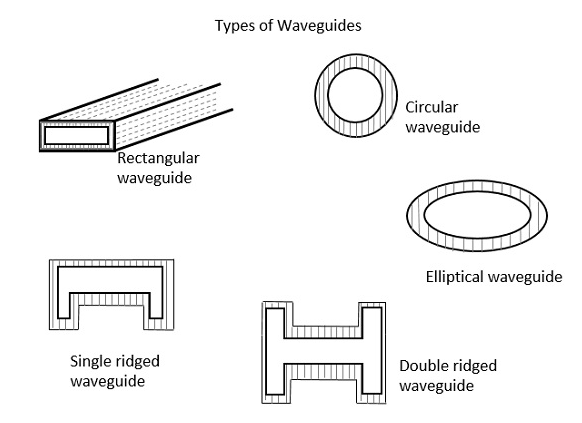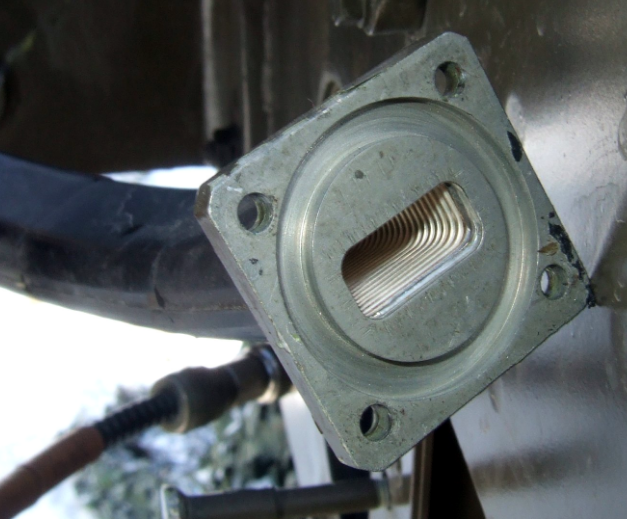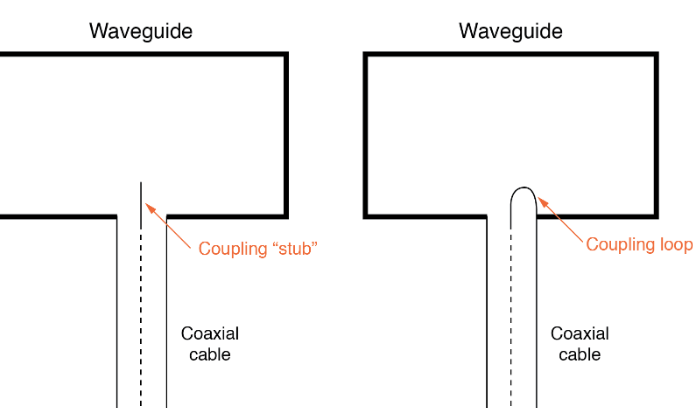A waveguide directs electromagnetic waves efficiently, minimizing loss over specific frequency ranges, crucial for communication and radar systems.
Table of Contents
Operational Mechanics of Waveguides
Waveguides are an essential part of the microwave and optical communication systems. It is the means by which electromagnetic waves are kept and guided from one point to another. Their operational mechanics, design considerations, and performance metrics are essential to an efficiently developed communication infrastructure.
Types and Materials of Waveguides
Metallic Waveguides
Metallic waveguides are the ‘classical’ means of transmitting waves, especially for microwave frequencies. The reason for their effectiveness lies in the high surface conductivity of the metal. The waveguides can be of various shapes and sizes, they usually are constructed of special-purpose conductive materials . The most common materials are aluminum or copper. Aluminum has low weight and good conductive qualities, and it is suitable for airborne systems. Copper waveguides have a greater conduction property, so the attenuation is lesser. For example, copper waveguides’ attenuation could be about 0.1 dBs per meter with the frequency of 10 GHz. The attenuation rate for aluminum waveguides could be about 0.15 dBs per meter.
Optical Fiber Waveguides
Optical fiber waveguides are also a means of immune telecommunications revolution, allowing for data keeping and transferring for great distances with minimal loss. Fiber optic waveguide employs the total internal reflection to keep light inside the core which is made usually of silica. The most significant advantage of the optical fibers over other waveguides is its complete immutability to electromagnetic interference, and the lowest attenuation or rates. For example, the silica fibers might have about 0.2 dBs per kilometer of attenuation at 1550 nm.
Dielectric Waveguides
Dielectrics are used for integrated optical circuits and microwave applications that require compactness or integration with other components. They are usually made of low-loss materials, such as silicon dioxide or polymers. The typical attenuation rate for a silicon dioxide waveguide is about 0.3 dB per cm.
In the case of waveguides, efficiency depends on the materials and frequencies that they support. Thus, optical fibers demonstrate high efficiency, as they provide a high bandwidth and low loss. However, their high cost of installation in undersea and remote can reach as much as twenty cents per meter. For example, the cost of laying an optical cable in the water takes more than thirty thousand dollars per kilometer . Size and Specifications
The sizes of waveguides are fundamental to determine the supported frequencies and modes. Thus, metallic waveguides, such as those made of copper, are usually a few millimeters up to a few centimeters high and wide to support the dominant mode of operation and reduce the power loss . As for example, the accepted width and height of a standard WR-90 waveguide, which is usually used for X-band operation in several GHz to several tens of GHz bands is about 22.86 by 10.16 mm . Material Quality and Lifespan
Material quality is important for both the properties of waveguides and their lifetime. According to Agrawal, a high-quality, pure copper or silver coating can significantly reduce surface roughness and, thus, reduce power loss . Optical fibers may be used for as long as 25 years when properly installed and maintained .
Performance Metrics
The key performance metrics include attenuation, power-handling capability, and bandwidth. As for attenuation, it depends on the conducting medium and aids, with lower values of attenuation indicating higher efficiency.
Power-handling capability may be defined as a capability of waveguides to transmit the power to load. For example, radar systems use waveguides at high power to transmit the large amount of power.
Bandwidth or a range of frequencies included in the waves has an impact on the efficiency of data transmission over waveguides.

Waveguide Applications in Modern Technology
Waveguides
Waveguides form the heart of a myriad of applications across virtually all the fields of modern technology. The blockage of waves by waveguides enables their precise control, guiding, and transmission. Natural occurring forces such as reflection, refraction, diffraction, and interference are used to control the path and characteristics of waves in waveguides. Waveguides become pertinent in:
Optical Fiber Networks
The global communications have a skeleton of vast, intercontinental optical fiber networks. The utilization of optical fiber, which is mainly made of silica, has greatly increased these networks’ bandwidth capacity. Christian et al. reported the achieving of 100 terabits per second in data transmission over an optical fiber as an exemplary application of these pads in the industry. Such high-speed data transmission makes optical fiber indispensable for internet backbones. Cables such as the MAREA, which connects the United States with Spain, within its over 8,000 kilometers length, are examples of major undersea cables that employ these fibers.
Satellite Communication
Metallic waveguides are indispensable in satellite communication since they are used to transmit signals of microwave to and from the satellites . These are the current high-power microwaves, and they take minimal losses since they are guided. At 12-18GHz, the Ku-band satellite system is a good example of an application that utilizes waveguides . In such applications, the minimization of losses is to ensure the maximum continuous power the waveguides can handle, which is typically 50 watts.
Use of Waveguides in Medicine
Waveguides are employed in MRI to transmit radiofrequency pulses into the human body such that detailed images can be obtained. These RF signals are crucial since, in their absence , there would be no quality image obtained. In a 1.5 Tesla MRI scan, a waveguide application in the operating frequency of 64MHz can be reported. This is crucial in making non-invasive diagnoses of the human body by ensuring a quality detailed image obtained can be used to determine a soft tissue problem.
Detection and Monitoring
Use of Radar
Whether tracking aircraft or rockets, rapid and efficient transmission and interception systems are crucial. Radars make use of waveguides to track aircrafts and engage in their communication through the emission and reception of high-power microwaves . The emitted signals may be S-band (2-4GHz), L-band (1-2GHz), C-band (4-8GHz), or X-band (8-12GHz) over guidance of a waveguide. The quality of the waveguides ensures losses are minim and less than 0.5dB for every meter maintained and aircrafts, and rockets can be tracked or intercepted over hundreds of kilometers.
Role in Microwave Transmission
Waveguides are used heavily across various applications as the linchpin of modern telecommunication systems. Their capacity to guide electromagnetic waves with great accuracy and efficiency has enabled their use in microwave transmission and optical data transfer, the former being foundational to wireless communication. Satellite communication systems also rely on waveguides, which have permitted the transmission of signals to space and back along immense distances. Finally, they are used to guide radar pulses and facilitate the detection of objects through analysis of the time required for them to be reached and traveled back. Each of these applications requires a waveguide that is up to the particular challenges alignment of the characteristics of the employed wave and its physical attributes.
The waveguide is used extensively in radar systems to ‘guard’ the emitted microwaves, preventing them from scattering before reaching their intended target. Upon reaching the object, the microwaves are reflected and sent back through the waveguide. The time taken to travel to the object and back is analyzed, and the characteristics of the object are determined on this basis. Specifically, waveguides with low attenuation are necessary to ensure the return of the reflected waves. The high power levels of the waves emitted by air traffic control radars, which can be as potent as 25 kW to 2 MW, must also be accommodated. Finally, the waves are usually modulated to permit analysis, and the waveguide must ensure the frequency is kept high. Similarly, radar receivers also require a highly directive waveguide resistant to various weather conditions.
Terrestrial microwave links use waveguides to implement point-to-point communication over land. Since microwave links are limited to the backbone of the internet or telecommunication networks, they do not require repeaters and can transmit data up to 50 miles. A microwave link uses microwaves in the 7‒40 GHz range . The waveguides in microwave systems are made of air, ensuring minimal loss and low attenuation, which may not exceed 0.1 dB per meter.
Fiber-optic waveguides transformed the way data is transmitted in the case of optical communication. Fiber optic waveguides are responsible for the current internet and telecommunication data transmission rates because they can account for the high transmission speed data can be transmitted at the speed of light and the high bandwidth of up to 100 GHz . Single-mode fiber optic cables allow data rate transfers over a single mode of 100 Gbps and distances of 200 miles without amplification . Most of the high-speed internet at present is ran or cabled in optical fibers as waveguides. These fibers run beneath the oceans and continents, transferring huge amounts of data with minimal loses across the planet . The low attenuation graph is what allows the high-speed transfer of these bundles of data . If the minimum loss of silica’s absorption was at 632.8 nm, waveguides would not be as efficient to transfer data.
Importance in Radar and Satellite Systems
Waveguides, as a principal component of radar and satellite systems enable the transmission and reception of electromagnetic signals at high ranges and various atmospheric domains with minimal loss. Radar Systems
Toradar or radio detection and ranging systems which are beneficial for navigation, surveillance and monitoring of weather use the waveguides by virtue of their control over transmission of microwaves at high precision with less or no loss which in fact influence the length of the radar providing high resolutions and range. Highly important is the use of waveguides in one of the radars, the air traffic control radar in transmitting the high-frequency microwaves in the form of pulses thus each striking an aircraft and on reflection signals are transmitted back which in turn helps in determining the position, speed and direction at which the aircraft is travelling. In this case, the waveguides in the radar system are highly standardized to transmit pulses with power as high as 2 MW offering an exquisite tracking range of few kilometers to 400 kilometers and even to 600 kilometers. Similarly, the weather radar system’s performance is also increasingly reliant on the use of waveguides, with respect to which the waveguides enable the transmission of high-frequency microwaves necessary for determining the intensity and range of precipitation in the form of rain, snow or other precipitation. Satellite Communication Systems
Satellite communication which is substantially used for telecommunications, televisions and internet facilities is highly dependent on the waveguides for their high power handling capacities in addition to the throughput it provides towards the satellite transponders. In other words, they are well suited for uplink and downlink paths with respect to Earth and the satellite. They are highly supportive in transmission of high-frequency signals located in the range of few GHz featuring Uplinks and downlinks transmission of signals thousands of kilometers from the ground stations to the geostationary satellites located at 36,000 kilometers above the Earth. For example, consider transmitting the uplink signal from the local broadcasting platform to the satellite revolving overhead at 36,000 km in the orbit. In this connection, the tracking signals in the form of high-frequency C-band or alternatively the Ku-band are transmitted via the waveguide to the transporters which in turn redistributes the signals back in the form of beams to descents Eagles in the form of local TV receiving stations.









